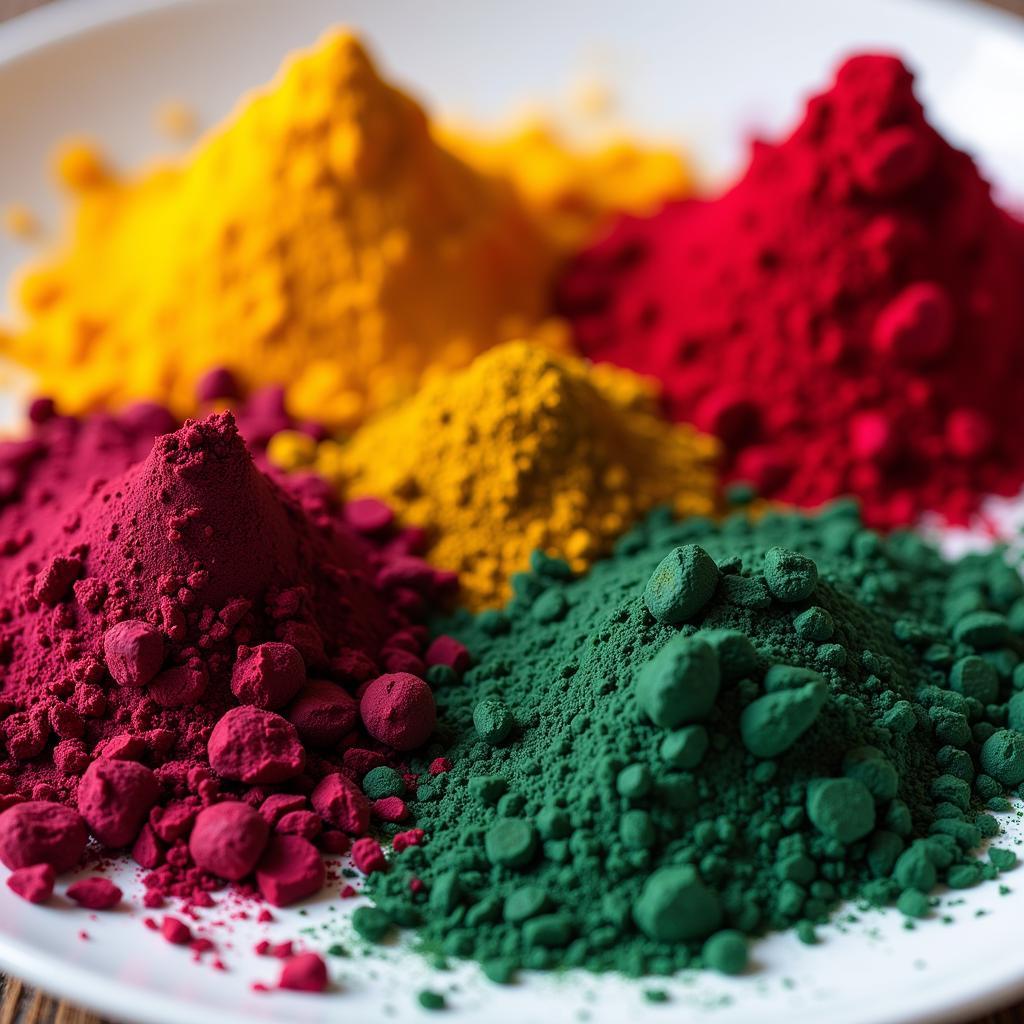Halal Food Colouring plays a vital role in enhancing the visual appeal and attractiveness of food and beverages while adhering to Islamic dietary guidelines. Understanding the principles and intricacies of halal food colouring is essential for both consumers and food manufacturers seeking to navigate the world of vibrant and permissible food additives.
 Various ingredients used in halal food colouring
Various ingredients used in halal food colouring
What is Halal Food Colouring?
Halal food colouring refers to colour additives that are permissible under Islamic law. These colourings are sourced from ingredients and manufacturing processes that comply with halal standards, ensuring they are free from any prohibited substances or practices.
Importance of Halal Food Colouring
For Muslims, consuming halal food and beverages is a fundamental aspect of their faith. Choosing halal food colouring ensures that even the smallest details of their diet adhere to Islamic principles, allowing them to enjoy vibrant and visually appealing food without compromising their religious beliefs.
 Halal certified food colouring products
Halal certified food colouring products
Sources of Halal Food Colouring
Natural Colourants:
Nature provides a rich palette of colours derived from plants, animals, and minerals. These natural sources are highly favoured in halal food colouring due to their inherent permissibility and minimal processing. Some popular examples include:
-
Turmeric: This bright yellow spice lends its vibrant hue to dishes like curry and is also used as a natural food colouring.
-
Paprika: Extracted from dried red peppers, paprika adds a reddish-orange colour to various cuisines and food products.
-
Beetroot: This root vegetable provides a vibrant pink to reddish-purple colour and is often used as a natural food dye.
Synthetic Colourants:
While natural colourants are generally preferred, certain synthetic colourings are also considered halal. These colourings are typically produced through chemical synthesis and must meet specific criteria to be deemed permissible. The manufacturing process must avoid the use of any haram (forbidden) ingredients or processes, and the final product must not contain any alcohol or animal-derived substances that are not halal.
Reading Food Labels for Halal Colouring
When purchasing food products, it is crucial to carefully examine the ingredient list to ensure the use of halal food colouring. Look for certifications from recognized halal organizations.
Tips for Using Halal Food Colouring
- Start Small: Begin with a small amount of colouring and gradually add more until the desired shade is achieved.
- Test Before Use: When trying a new colouring, test it on a small portion of food before adding it to the entire batch.
- Storage: Store halal food colouring in a cool, dark place to preserve its vibrancy and shelf life.
 Halal food colouring used in desserts
Halal food colouring used in desserts
Conclusion
Halal food colouring allows individuals to enjoy the visual appeal of food while adhering to their religious obligations. By understanding the sources, regulations, and tips for using halal food colouring, consumers can confidently choose products that align with their values. For any assistance regarding halal food products, feel free to contact us at Phone Number: 02437655121, Email: [email protected], or visit our store located at 3PGH+8R9, ĐT70A, thôn Trung, Bắc Từ Liêm, Hà Nội, Việt Nam. Our customer support team is available 24/7 to assist you.